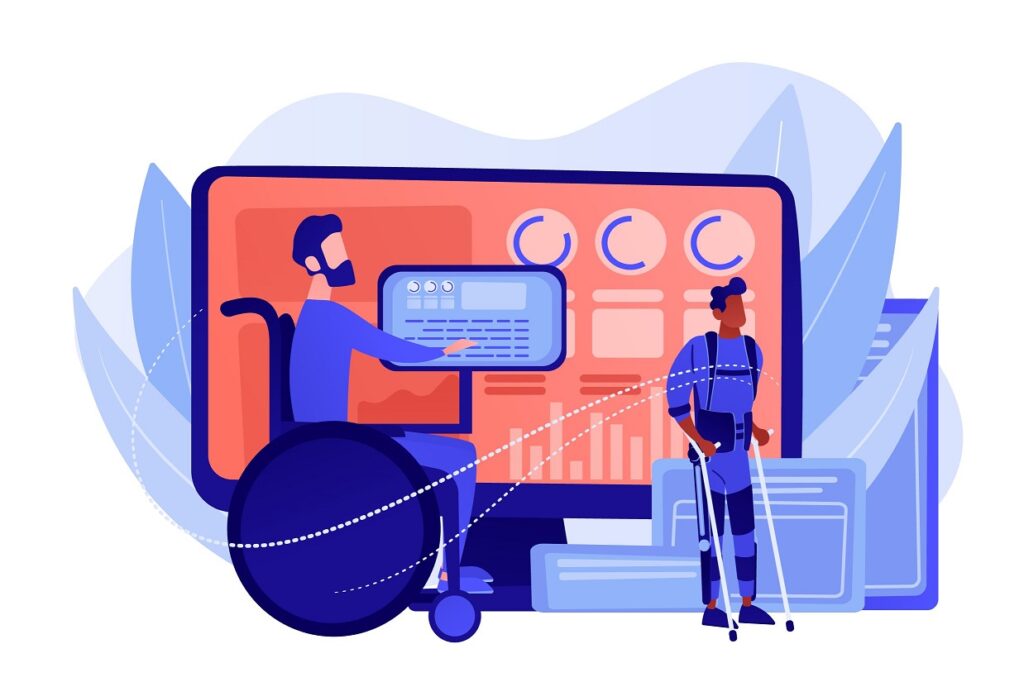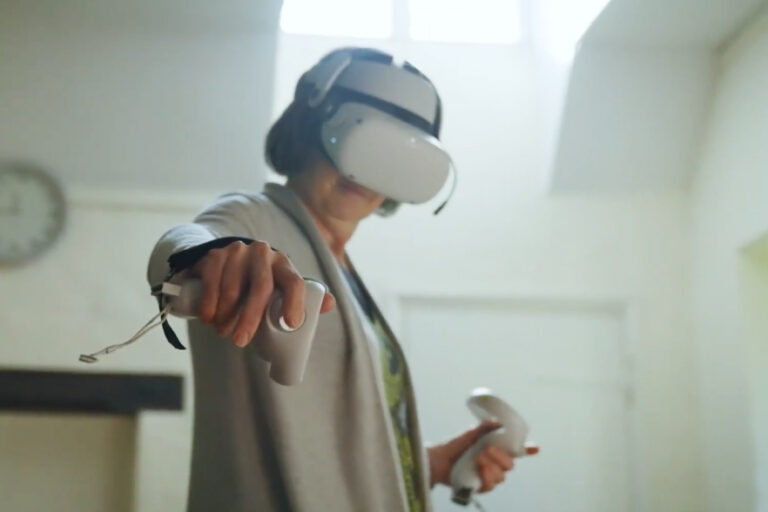
Almost a fifth (19%) of working-age adults in the UK are disabled, which is 7.7 million people. And yet those in this significant proportion of the workforce are more than twice as likely to be unemployed as their non-disabled peers, according to the disability equality charity Scope.
While there’s no justification for this imbalance, perhaps it can be linked to the fact that one in three Brits deems disabled people as less productive.
It’s no surprise that the 14.1 million disabled people in the UK face prejudice, as productivity is a serious challenge for the nation’s employers. However, this perception, combined with stagnant wages and higher levels of unemployment, presents an exceptionally challenging job market for people with disabilities – and many are now asking for additional support to find rewarding work.
The UK government is keen to help more disabled people into employment and has pledged to do so by 2027. The Access to Work scheme, which is delivered by the Department for Work and Pensions, is in place to help achieve this, providing financial support to employers hiring disabled people and funding for “aid and equipment” too.

Providing equality with emerging technology
While this does sound promising, the question still remains: what emerging forms of “aid and equipment” are available to employers, and how can they make a difference?
Gartner, the world’s leading research and advisory company, has recently predicted that AI and emerging technologies will help triple the number of disabled people employed globally by 2023. And while this claim was made before COVID-19 turned the world on its head, the fact remains that change is afoot. Whatever the crisis throws at us, if anything, it will help to accelerate the adoption of certain technologies that can support disabled people in the workplace.
While the benefits of emerging technology are far-reaching for disabled people, it’s also beneficial for the organisations that hire them too. As Daryl Plummer, vice president and Chief Gartner Fellow explained recently, “people with disabilities constitute an untapped pool of critically skilled talent”. By hiring them, firms can gain new skills, support communities, increase retention rates among staff and boost profitability.
Software robots to the rescue
One technology that’s proving to be increasingly useful in supporting disabled workers is robotic process automation (RPA). Put simply, RPA allows the creation of software robots that can complete manual and repetitive virtual processes quickly and efficiently. The software robots have the ability to both “see” what’s on screen and “control” the mouse and keyboard just like a human would.
For disabled people, this could be revolutionary. A new recruit might be a PhD-level expert, but if they find physically controlling a computer mouse challenging, having software robots on-hand to copy and paste information, send emails, and move elements across applications would support them. The employee would be able to direct their robots to complete tasks that needed addressing, while maintaining full control of the overall job. It would also give them additional time to focus on more important tasks, such as problem solving, liaising with customers and building more robots.
In terms of how this might work, it’s a matter of the disabled person identifying the repetitive and tricky process within the job, recording themselves or a colleague doing it once and then programming the robot to follow that process on demand. Plus, on the rare occasion the robot didn’t know what to do, it would ask its controller.
There’s a huge scope to make life easier with RPA – and solutions are now being implemented across a wide range of sectors, offering new and exciting opportunities in everything from insurance and banking to healthcare and manufacturing. However, it’s possible that some of the most exciting prospects for disabled people are the career opportunities already existing within the RPA space.
High in both skill and demand, RPA can offer a fulfilling and challenging career path. And with an extensive range of free training available, aspiring developers can enter a novice and leave an expert if they have the motivation to do so.
Accessibility needn’t be an issue for those with disabilities either. Developing RPA solutions can be done from the comfort of your own home, toppling yet another hurdle that has too-often prevented ambitious and capable people with disabilities from securing well-deserved roles.

Levelling the playing field
There’s a common assumption that automation and artificial intelligence are going to replace and displace workers. However, at UiPath we believe that robots should be built to work with, rather than against, employees – especially those with disabilities.
This belief has been exemplified by our partner Specialisterren, a Dutch software testing and test automation specialist. When the company was founded by Sjoerd van der Maaden, whose son has a form of autism, it was built upon the idea that people with autism can achieve career success, economic independence and personal growth when nurtured in the right setting. The company has found that the skillset of those with autism matches up with building robots and that RPA can bridge the gap for disabled people who are usually distanced from the job market.
This was certainly the case for Daniel Munnings, managing director of Munnings Software Solutions. Born with arthrogryposis, a non-degenerative condition limiting the movement of his wrists and elbows, Daniel’s disability meant that repetitive or strenuous physical work was out of the question. Although RPA wasn’t his first career choice, he soon found the sector to be unique in its ability to put disabled people on a path to real progression.
“RPA has true potential to make disabled people’s lives easier, and it’s become a way of life for me,” Daniel explained recently. “Many people wouldn’t think of it as a tangible career path, but with extensive training available and the ability to work from home, RPA can provide a career ladder that’s free from limitations.
“While progress has been made and many companies across the country can now offer accessibility features for disabled employees, these can often have their flaws. Anyone with a disability can do RPA, and with intuitive and free solutions on offer, workers needn’t look far for support. RPA is not only making certain roles more accessible for those with disabilities, it’s becoming a career path that puts disabled people on a level playing field with their able-bodied peers.”
An obvious investment
While it may sound futuristic, RPA technologies are available now – and they’re being used by some of the world’s largest businesses to support their staff. With government funding available to provide these tools, there’s a real opportunity for organisations wanting to tap into the latent talent pool represented by disabled people.
In order to achieve diversity and equality in the workplace, recruiters need to see people and their skills when hiring, not their disability. Because if disabilities can be overcome through assistive technology, the overall impact could be a highly productive workforce of bright and capable people, supported by a team of digital assistants at their disposal.
Perhaps it’s going to be the future – and not just for disabled people in the UK. Let’s develop a robot for every person and achieve the productivity to match.

Chris Duddridge
Chris Duddridge, Area Vice President & Managing Director UKI, at UiPath



